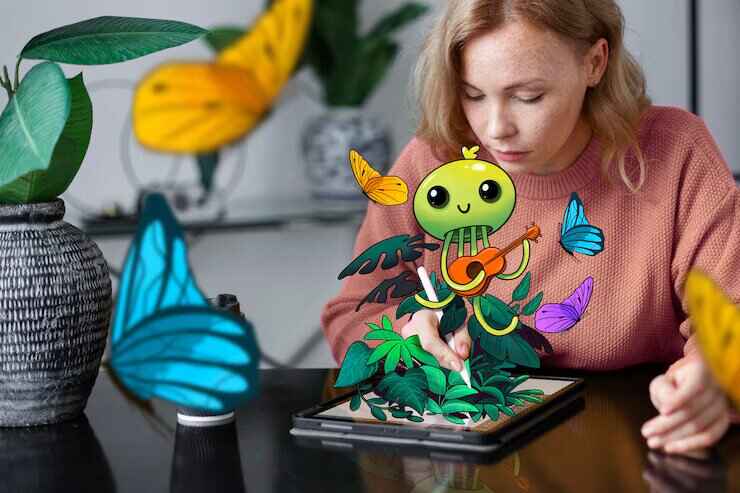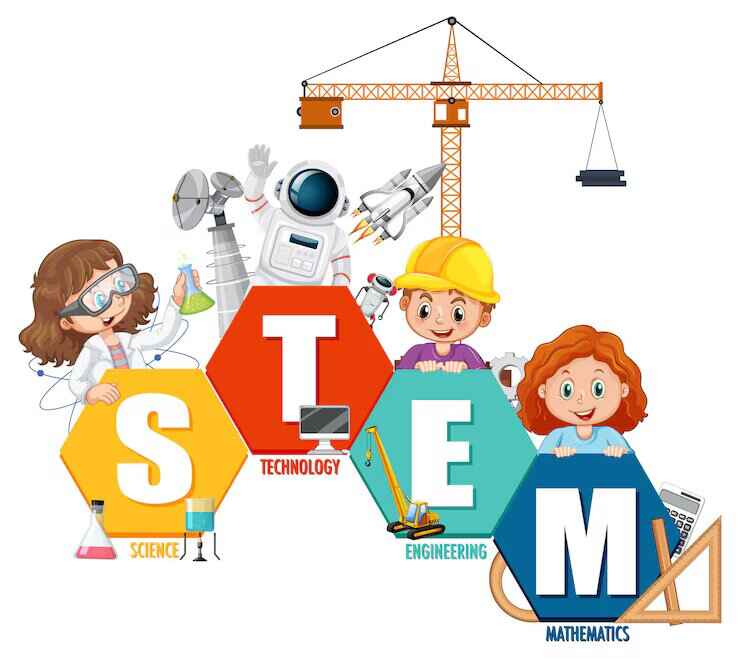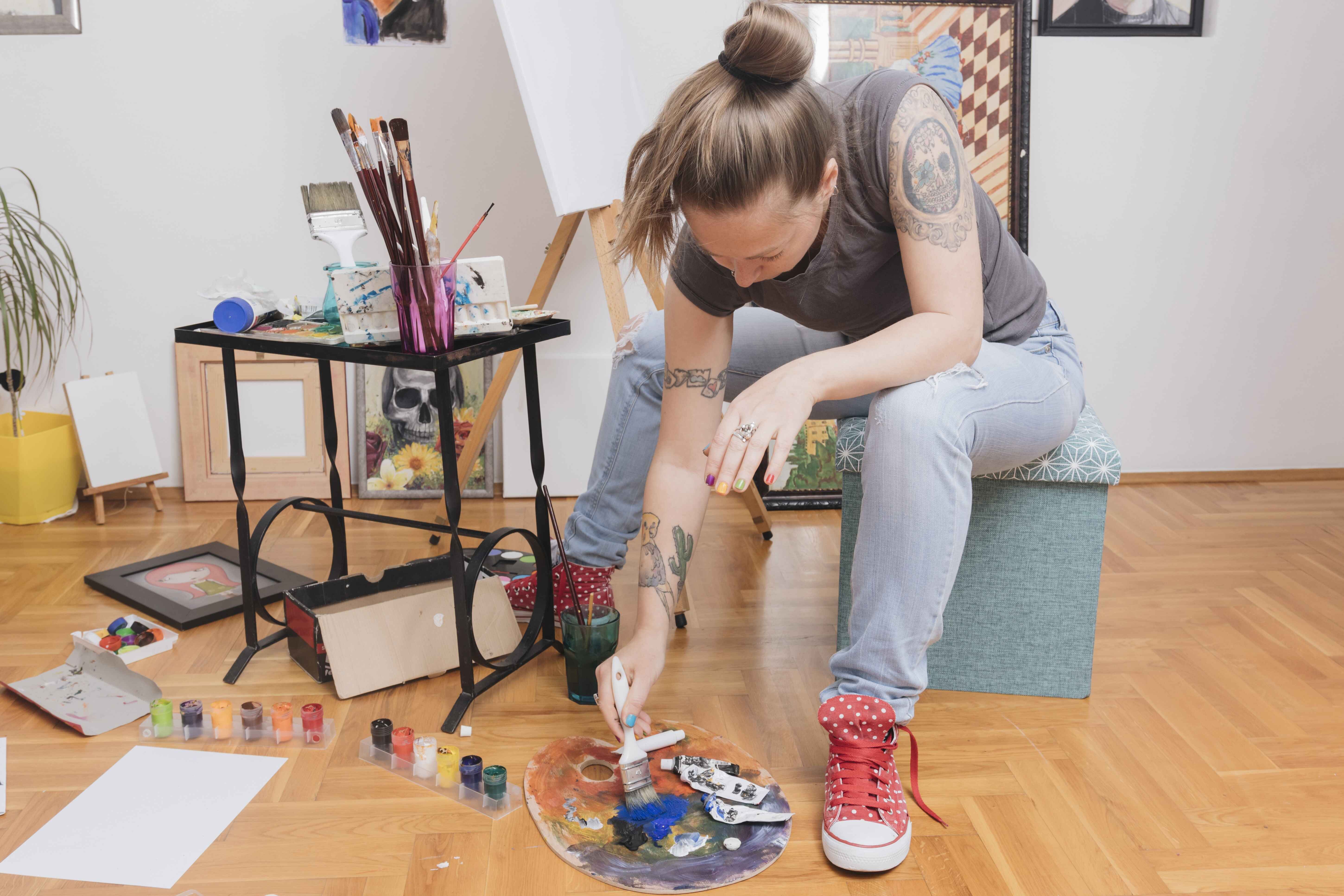
Overview
For many years, the foundation of academic and professional development has been STEM (science, technology, engineering, and mathematics) education. These fields are crucial to solving many of the most significant issues the world is currently facing. However, more and more educators and powerful individuals believe that integrating "Art" into STEM—making it STEAM—can better prepare students for the future. The creativity, emotional intelligence, and innovation that art fosters are essential for both a robust economy and a well-rounded education.
The Significance of Creativity in STEM
It's common to assume that artists, writers, and musicians are the only ones capable of creativity. In actuality, however, it is an essential step in the scientific and technological process. Innovative thinking is the foundation of all great discoveries, from the creation of the iPhone to advances in environmental engineering. Students with creative skills are able to approach problems in novel ways and come up with more comprehensive solutions.
85% of educators concur that students' success in the workforce depends on their ability to think creatively, according to an Adobe report titled Creativity and Education: Why it Matters. However, standardized testing and memorization still dominate many schools, leaving little opportunity for creativity or experimentation.
The Transition to STEAM Education
The acronym for Science, Technology, Engineering, Arts, and Mathematics is STEAM. This method combines the artistic creative processes with the analytical rigor of STEM. By teaching students how to communicate, think critically, and innovate, the objective is to strengthen rather than weaken the scientific components of education.
One of the main supporters of the STEAM movement has been the Rhode Island School of Design (RISD). They contend that when disciplinary lines are blurred, the most creative discoveries frequently take place. Artists and designers work alongside engineers at companies like Apple and Google, which are renowned for their innovative cultures and user-friendly designs.
STEM-related Art Examples
Product Design: A group of designers and artists work behind every successful device. They concentrate on a product's appearance, feel, and user interaction. Industrial designers create technology that is both aesthetically pleasing and functional by applying artistic principles.
Architecture: The ideal fusion of art and engineering is architecture. Together, structural integrity and imaginative design create environments that are both practical and motivating.
Medical Visualization: By producing precise anatomical illustrations, 3D models, and virtual reality tools that aid physicians and patients in understanding intricate procedures, artists play a critical role in the medical field.
Data visualization: Converting data into eye-catching images speeds up people's understanding of complex information. Visual artists create everything from COVID-19 dashboards to climate change graphics.
The advantages of integrating art into STEM
Improved Problem Solving: Students who study both science and art grow more adaptable. They discover that there are multiple approaches to a problem.
Better Communication: Self-expression is encouraged by art. This translates to improved teamwork, more lucid presentations, and the capacity to disseminate findings to larger audiences in STEM fields.
Emotional Intelligence: Art fosters self-awareness and empathy, two traits that are equally important in everyday life and in engineering teams and laboratory research.
Increased Engagement: Lessons that use creativity have a higher chance of maintaining students' interest. For underrepresented groups in STEM who might not envision themselves in traditional science roles, this is particularly crucial.
How STEAM can be introduced in Schools
Cross-Disciplinary Projects: Schools can promote cooperation between art and science instructors. Students could, for instance, construct ecosystem models and illustrate them or compose music using mathematical patterns.
Innovative Learning Environments: Classroom layouts can be changed to encourage experimentation. Artistic and scientific exploration are fostered by makerspaces and studios that facilitate experiential learning.
Professional Development: To successfully implement STEAM in the classroom, teachers require resources and training. Workshops that teach teachers how to incorporate the arts into their current curricula can be offered by schools.
Community Partnerships: To give students real-world context and mentorship opportunities, local artists, engineers, and tech companies can collaborate with schools.

The Function of Investment and Policy
Promoting STEAM education is a responsibility of policymakers. When school budgets get tight, funding for the arts is frequently the first to go, but this trend needs to change. Grants and government initiatives can provide the necessary support to create a more balanced and forward-thinking education system.
Initiatives by the U.S. Department of Education and programs like the National Endowment for the Arts have begun to acknowledge the significance of STEAM. Their assistance has aided nationwide pilot projects that demonstrate quantifiable gains in student participation and academic performance.
Challenges and Considerations
Even though STEAM has a lot of potential, there are drawbacks. Schools might not have the money to support new programs, and teachers might feel unprepared to combine disciplines. Furthermore, evaluation techniques must change to emphasize both technical accuracy and creativity.
But with strong leadership and community support, these challenges can be overcome. The advantages of raising a generation of students capable of critical and creative thought greatly exceed the disadvantages.

Conclusion: Using STEAM to Build the Future
The world is rapidly evolving. Global health concerns, climate change, and automation all call for intricate, creative solutions. We give students a more comprehensive toolkit to address these issues by integrating the arts into STEM education. STEAM is an evolution of science, not a break from it.
Students who receive creative education are better able to envision possibilities rather than merely analyze existing ones. We develop future leaders who are not only smart but also creative, sympathetic, and flexible by encouraging both left- and right-brained reasoning. That is precisely who we need in a world that is changing quickly.